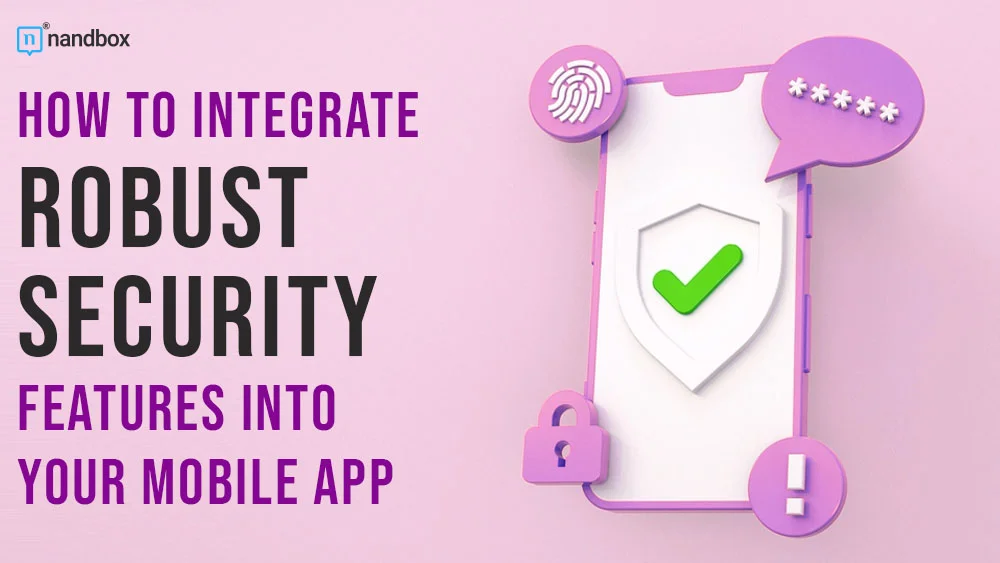With the ever-increasing dependence on mobile apps for everything from banking to social networking, ensuring robust security is more critical than ever. Cyber threats are evolving, becoming more sophisticated and harder to detect.
As a developer, you must prioritize protecting your users’ data and privacy. This guide will walk you through the ways to integrate top-notch security features into your app effortlessly.
Whether you’re just starting or refining an existing application, these strategies will help safeguard your app against vulnerabilities and cyber-attacks effectively. Let’s dive in!
5 Ways to Integrate Security Features Into Your Mobile App
To ensure your mobile app remains secure and trustworthy, integrating robust security features is essential. Here are five strategies to help you fortify your app and protect your users’ data.
1. Regular Security Updates
Keeping your mobile app up-to-date with regular security patches is non-negotiable.
Vulnerabilities are constantly discovered, and without updates, your app may become an easy target for new types of cyber attacks. With frequent security updates, you can address these vulnerabilities before they become real threats.
This proactive approach not only protects user data but also enhances trust in your application.
For expert assistance in staying up to date with robust security updates and other practices, consider partnering with Tekie Geek, which offers managed and co-managed cybersecurity services in NY. They can help ensure that all security protocols are always current and effective.
2. Secure Authentication Methods
Implementing robust authentication methods is foundational for your mobile app’s security. Opt for multi-factor authentication (MFA) to provide an added layer of protection beyond passwords.
Combining something users know (a password) with something they have (a smartphone for receiving verification codes) greatly reduces the chances of unauthorized access. Incorporating biometric options like fingerprint or facial recognition can further enhance security.
When you implement these measures, you ensure that only legitimate users gain access to sensitive features and data within your app, bolstering overall trust and security.
3. Data Encryption
Data encryption is a critical component for securing your mobile app. By encrypting sensitive information, you convert it into code that can only be decrypted by authorized parties.
Utilizing protocols like HTTPS ensures that data being transferred over networks remains protected from interception. Additionally, consider end-to-end encryption to safeguard any communication within the app itself.
This means even if an attacker manages to breach your defenses, they won’t easily access meaningful data. Encrypting user data not only enhances security but also fosters trust among your users by prioritizing their privacy.
4. Code Obfuscation
Code obfuscation is a vital technique for protecting your mobile app from malicious attacks. When you transform your code into a complex, non-readable format, you make it significantly more challenging for attackers to understand or reverse-engineer it.
This added layer of security helps prevent unauthorized access and intellectual property theft. Despite the complexity added by obfuscation, the app’s functionality remains intact for end users. It’s an effective measure to deter hackers who are attempting to tamper with your application’s core logic or uncover hidden vulnerabilities.
In short, obfuscating your code strengthens your app’s overall security posture.
5. User Permissions Management
Managing user permissions wisely is essential for maintaining your mobile app’s security.
When requesting permissions, ask only for what is necessary to function properly. Overreaching can raise red flags and compromise user trust. Always provide clear explanations as to why each permission is needed; this transparency fosters a sense of security among your users.
Additionally, you should regularly review and update permissions to ensure compliance with the latest security guidelines and industry standards. By being mindful about user permissions, you limit potential entry points for attackers while enhancing the overall user experience.
Use These Tips to Improve Your App’s Security
Implementing robust security features into your mobile app isn’t just a best practice; it’s essential for ensuring user safety. Don’t wait until a breach occurs to fortify your defenses. Start integrating these important measures now to secure your app against potential threats.
Protecting your app means protecting your users, and there’s no better time to start than today. Take action, secure your app, and provide the peace of mind that all users deserve.




